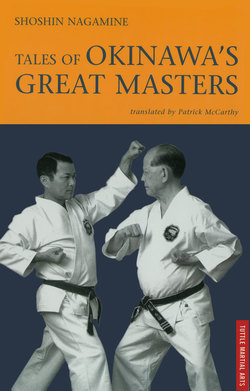Читать книгу Tales of Okinawa's Great Masters - Shosh Nagamine - Страница 9
На сайте Литреса книга снята с продажи.
ОглавлениеForeword
I would like to say that this book is interesting, and I am impressed to say the very least. The reason I found it interesting was because it was written by someone who, as a modern bushi himself, was able to convincingly portray the legacy of Okinawa’s old bushi.
Before reading this book I had no idea that the bushi and the arts shared any connection. Moreover, and in all modesty, I also have to say that I had no real knowledge of Bushi Nagamine Shoshin either. However, after having read his book, twice, I came to understand much more than I had ever expected.
Historically, there have always been misunderstandings surrounding karate masters and Okinawan sumo wrestlers alike. Oral tradition characterizes them as hero-like figures, and television dramas portray them as such. However, the more I read Nagamine Sensei’s book, the more I had to modify my preconception. After first reading Funakoshi Gisho’s foreword, I thought it was a little exaggerated, and chalked it up to supporting the author. However, after carefully reading the subsequent pages, I came to realize two important facts: the detailed explanation of bunbu, and the documentation which Nagamine Sensei had compiled from his extensive research and interviews.
I was also impressed that Nagamine Sensei had carefully corroborated his historical investigation with either the testimonies of the masters themselves or their immediate families. Additionally, Nagamine Sensei’s superb writing forte is second only to his deep understanding of karate-do which is clearly evident in the way this book has been composed. This publication should therefore represent a scale by which to measure the depth of a man who devoted his entire life to karate-do.
I am not a person who easily expresses my feelings; however, when reading a stirring book, and especially if I am moved, tears often culminate my emotions. For this, my family has often teased me. Yet, I experienced the same feeling when reading this book. My family laughed at me, but that did nothing to change the way I felt. I was truly touched.
In this fascinating book, historical inaccuracies surrounding Okinawan martial folklore have been corrected. Hence, we can read stories about stalwarts like Makabe Choken, To-Te Sakugawa Kanga, Matsumura Sokon, Matsumora Kosaku, Itosu Anko, Higaonna Kanryo, Funakoshi Gichin, Kyan Chotoku, Motobu Choki, and Arakaki Ankichi.
This book also describes the training chronicles of Okinawa’s sumo community. For example, it recounts the stories of Akarie Matsuzo, Kawamae Kitatsu, Kinjo Masayuki, Uezu Jiryo, and Ishikawa Seijin. Moreover, this fascinating publication also introduces Kushi Jokei, who, by all accounts, enjoyed a glorious interval as a postwar leader of the sumo community in Okinawa.
As I stated at the beginning of this foreword, this book is an interesting publication in that it represents an authentic account of pre- to post-war Okinawan karate masters, bujin, and native sumo wrestlers, their bouts and reputations. Most of all, these chronicles are introduced by Nagamine Shoshin, a master of bunbu ryo do: someone whose physical skills are equally balanced by his intellectual dexterity.
As mentioned earlier, at first I thought Funakoshi Gisho’s foreword was exaggerated. However, after reading the manuscript, I concur. This book is a must for everyone who studies karate. Moreover, I also recommend it as a source from which the modern bujin can better understand karate and Zen, as well as knowing karate’s place in Okinawan culture.
—Kadekawa Junki
Journalist, Ryukyu Shinpo
[Note: This foreword first appeared in the Ryukyu Shinpo evening edition on July 12th, 1986.]
